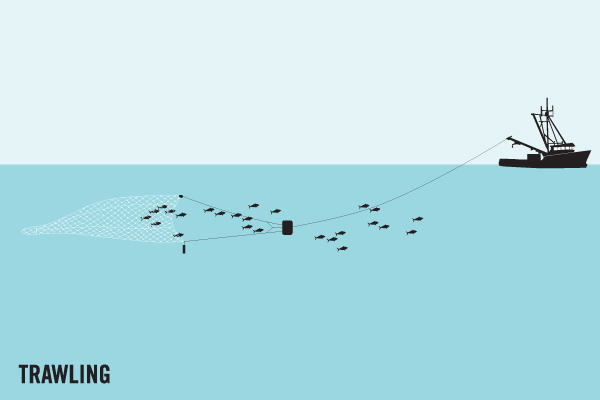Average Weight/Length
Most seen in shallow water are from 5 to 50 pounds, but they can grow quite large in deeper water. World record 210 pounds.
7.5 to 9.75 ft (2.2 to 3 m)
200 to 330 lbs (90 to 150 kg)
Location Habitat
Nurse sharks are found in the warm, shallow waters of the western Atlantic and eastern Pacific oceans. They are abundant throughout their range and have no special conservation status, although the closeness of their habit to human activities is putting pressure on the species. Frequently sighted on shallow flats of South Florida, the Bahamas and most Caribbean Islands, where it usually is lying still. Also lies still in deeper water around and under reefs, ledges and navigation markers. Found on continental and insular shelves. Solitary and sluggish fish, often encountered lying on the bottom. Nocturnal, feeding on bottom invertebrates such as spiny lobsters, shrimps, crabs, sea urchins, squids, octopi, snails and bivalves, and fishes like catfishes, mullets, puffers and stingrays. Ovoviviparous with 21 to 28 young in a litter. Kept in captivity for researches. May attack humans if they are molested or stepped upon accidentally. Edible, but mainly valued for its hide, which makes extremely tough and durable leather. Common over shallow sand flats, in channels, and around coral reefs; young may be found among prop roots of red mangroves
Biology & Physical Description
Nurse sharks are nocturnal and will often rest on the sea floor during the day in groups of up to 40 sharks, sometimes piled on top of each other. The scientific name Ginglymostoma cirratum is is a mix of Greek and Latin and means "curled, hinged mouth" to describe this shark's somewhat puckered appearance. The origin of the name "nurse shark" is unclear. It may come from the sucking sound they make when hunting for prey in the sand, which vaguely resembles that of a nursing baby. Or it may derive from an archaic word, nusse, meaning cat shark. The most likely theory though is that the name comes from the Old English word for sea-floor shark: horse. Nurse sharks are slow-moving bottom-dwellers and are, for the most part, harmless to humans. However, they can be huge—up to 14 feet (4.3 meters)—and have very strong jaws filled with thousands of tiny, serrated teeth, and will bite defensively if stepped on or bothered by divers who assume they’re docile. They use their strong jaws to crush and eat shellfish and even coral, but prefer to dine on fish, shrimp, and squid. They are gray-brown and have distinctive tail fins that can be up to one-fourth their total length. Unlike most other sharks, nurses are smooth to the touch. Overall brown or deep rust color. It has a very small, underslung mouth, and is our only Shark with barbels at the nostrils. Dorsal spines (total): 0. Moderately long barbels, nasoral grooves present but no perinasal grooves, mouth well in front of eyes, spiracles minute, precaudal tail shorter than head and body, dorsal fins broadly rounded (the first much larger than the second and anal fins), caudal fin moderately long, over 1/4 of total length, yellow-brown to grey-brown in color, with or without small dark spots and obscure dorsal saddle markings. Head blunt, mouth inferior, pair of conspicuous barbels between nostrils
Life Cycle & Mating Behavior
Ovoviviparous, with 21 to 28 young in a litter. Development of young in the uterus being sustained by a large supply of yolk. Females give birth in late spring and summer in waters off Florida. During courtship, a pair sometimes a triplet of adults engaged in synchronized parallel swimming. While on it, the male may grab one of the female's pectoral fins with his mouth which induces the female to pivot 90° and roll on her back on the bottom. Then the male inserts a clasper in her vent, and then roll on his back beside the female. Pair may break apart and depart rapidly after copulation or the male may remain motionless on the subtrate as if recovering from the mating bout. Not all attempts of males to copulate with a female nurse shark result in successful fertilization, females may employ avoidance by 'pivotting and rolling' to escape from male attention. Or females may 'lie on back' and rest motionless and rigidly on the substrate. On the contrary, females send signals of readiness to copulate with males by arching their body toward their male partner and cupping the pelvic fin. Male nurse sharks may mate with many females over several weeks (polygyny) and vice versa (polyandry)
Geographic Species Map (Fishbase.org Map)
|
|

|
Summary of Distribution: Western Atlantic: Rhode Island, USA to southern Brazil, including the Gulf of Mexico and Caribbean, Antilles. Eastern Atlantic: Cape Verde to Gabon; accidental to France. Eastern Pacific: Gulf of California and southern Baja California, Mexico to Peru. Closely related species are found in the Indian Ocean. |
|
Note: Distribution range colors indicate degree of suitability of habitat which can be interpreted as probabilities of occurrence (fishbase.org) |
|
Sport Fishing Techniques
|
|
TrawlingTrawling is when.... |
|
Tackle & Baits
Anything goes except fly tackle. Although its natural diet is shellfish, it will eagerly take cut baits of any kind. Not fished with artificial lures.
Game Rating
Game Rating : 3/10
Game Description :
Probably the worst fighter of all the Sharks.
Food Rating
Game Rating : 8.5/10
Game Description :
Excellent; probably the best of the Sharks, maybe because of its shellfish diet.
Picture (Fish)
|
|
|
|
|
|
Picture Mount
|
|
|
Product Specs
Available Sizes: 53 in. - 216 in.
Details: Fired-Enamel Glass Eye




















 Nurse Shark
Nurse Shark 








